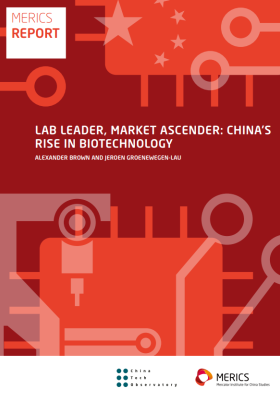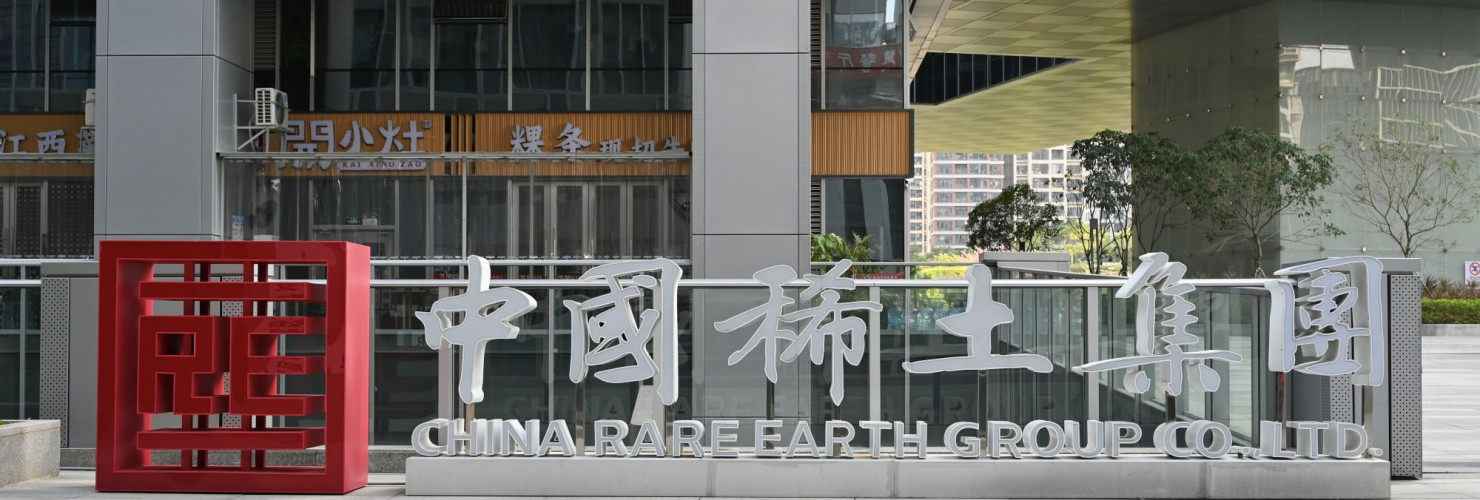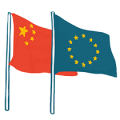

Avoiding a race to the bottom: How the EU can counter Chinese export controls
 | This analysis is part of the MERICS Europe-China Resilience Audit. For detailed country profiles and further analyses, visit the project's landing page. |
Europe should avoid compromising its national security interests and export regime. Rebecca Arcesati says it should instead use its market power to extract concessions.
Following the lead of the United States, China has transformed export controls from narrow tools used to regulate military and dual-use items and technologies into blunt instruments of economic statecraft. By leveraging its dominance in critical raw materials, Beijing this spring compelled Washington to soften security-motivated restrictions on semiconductor-design software, jet engines, and certain AI chips. In October, it reached a new stage in the weaponization of supply chains, claiming jurisdiction over potentially any product worldwide that either contains Chinese rare earth elements (REEs) or was made using related Chinese technology.
The EU and its member states are ill-prepared for this new reality in which the world’s two major powers disrupt the supply chains of entire industries – ostensibly in the name of national security. China’s grip on critical minerals is wreaking havoc across Europe – from car manufacturing to defense. Moreover, Chinese controls increasingly target critical civilian technologies, equipment, and expertise, such as key inputs for battery production. While Washington is focused narrowly on controlling advanced semiconductor technology exports, Beijing seeks to dominate entire value chains as a source of deterrence, coercion, and power.
The problem with using export controls as a bargaining chip
One answer would be for the EU itself to increase high-tech export restrictions to pressure Beijing into easing controls on REEs. There are at least two problems with this course of action. First, it would fuel a spiral of tit-for-tat retaliation that has led the United States and China to undermine the integrity of export controls – a tool designed to advance national security and foreign policy objectives such as controlling the proliferation of arms, weapons of mass destruction, or frontier and potentially disruptive dual-use technologies. Second, export licensing is a national competency. EU member states have struggled to coordinate and enforce controls even in response to Russia’s invasion of Ukraine; a large enough political consensus on leveraging China’s dependencies on European technology still seems far off.
Another remedy would be for Europe to appease China by loosening existing dual-use export controls. In fact, following an EU–China commitment in July to upgrade their export control dialogue, Beijing expressed hopes that “the EU will ease restrictions on high-tech export.” The deep ultraviolet lithography (DUV) chip-making machines of Dutch manufacturer ASML are likely at the top of China’s mind. But the times call for escalation, not concessions – and even if EU capitals were tempted to meet China’s demands, they would quickly run up against US extraterritorial controls. More importantly, trading genuine national security interests – such as preventing dual-use goods from flowing to the Chinese Communist Party’s military – for economic concessions would set a dangerous precedent.
A strategic, coherent, and effective EU export control policy toward China remains essential. President Xi Jinping’s push for an “integrated national strategic system” blurs the boundaries between civilian, security, and military sectors – making it increasingly difficult to determine the true end-use of European technology once it reaches China. This challenge is compounded by the fact that Beijing has also become the main enabler of Russia’s war in Ukraine. In 2024 alone, shipments from China to Russia of particularly sensitive dual-use items – as defined by the EU’s Common High Priority List of products – exceeded USD 4 billion.
EU member states must first resist Chinese demands that could further fragment the bloc’s already patchy export control regime, which grants national governments considerable leeway. For example, licensed dual-use exports from Germany to China steadily declined between 2021 and 2024 in both number and value, reflecting a degree of caution toward Beijing. The number of French authorizations, by contrast, remained relatively stable – and their value doubled between 2022 and 2024, reaching around 16 percent of the country’s total exports to the PRC. This was presumably due largely to aerospace sales.
Although data gaps limit firm conclusions, these patterns suggest that European high tech continues to reach China with relative ease. European Commission data show that only 0.03 percent of global exports from the EU were denied licenses in 2022. This indicates that even capitals like Berlin almost certainly continue to authorize many more licenses than they deny – not counting additional dual-use items not covered by the relatively narrow EU-wide or national control lists. If anything, there is room for tightening, not loosening, licensing – and some have suggested aviation and aerospace as promising pressure points in REE negotiations with Beijing.
The advantages of using the Anti-Coercion Instrument
The Anti-Coercion Instrument (ACI), currently the EU’s best hope to counter China’s pressure, does allow for export controls to be used among the possible countermeasures in certain instances. But as mentioned, this course of action would require significant political will – for example, is Paris ready to put Airbus’s China sales on the line? There is also the risk of Beijing foregrounding future concessions around the European dual-use technology it wants, as ACI countermeasures are supposed to be lifted once the injury is repaired. To supply European militaries with critical raw materials, China will likely expect unfettered access to dual-use or even defense technology in return.
That leaves the single market as the EU’s strongest asset – if the bloc leverages it effectively. Rather than joining Beijing and Washington in a tit-for-tat exchange of technology transfer demands that risks compromising non-negotiable national security interests, the European Commission should strive to secure the backing of key member states to target Chinese importers and investors. If executed proportionately, this asymmetric retaliation would both mobilize tools over which Brussels has strong powers – such as duties, quotas, and import licenses – and go some way toward threatening the CCP’s strategy of export-led economic growth. Hurting Chinese investments may be trickier, but it could prompt Beijing to loosen its grip on the civilian technologies Europe wants, such as inputs for battery and electric vehicle production.
All this assumes politicians are brave enough to activate the anti-coercion instrument and are ready for transactional dealings with their Chinese counterparts. Without this kind of leadership, Europe’s industrial future will be surgically orchestrated by CCP bureaucrats – one license at a time.

This analysis was made possible with support from the “Dealing with a Resurgent China” (DWARC) project, which has received funding from the European Union’s Horizon Europe research and innovation programme under grant agreement number 101061700.
Views and opinions expressed are however those of the author(s) only and do not necessarily reflect those of the European Union. Neither the European Union nor the granting authority can be held responsible for them.

